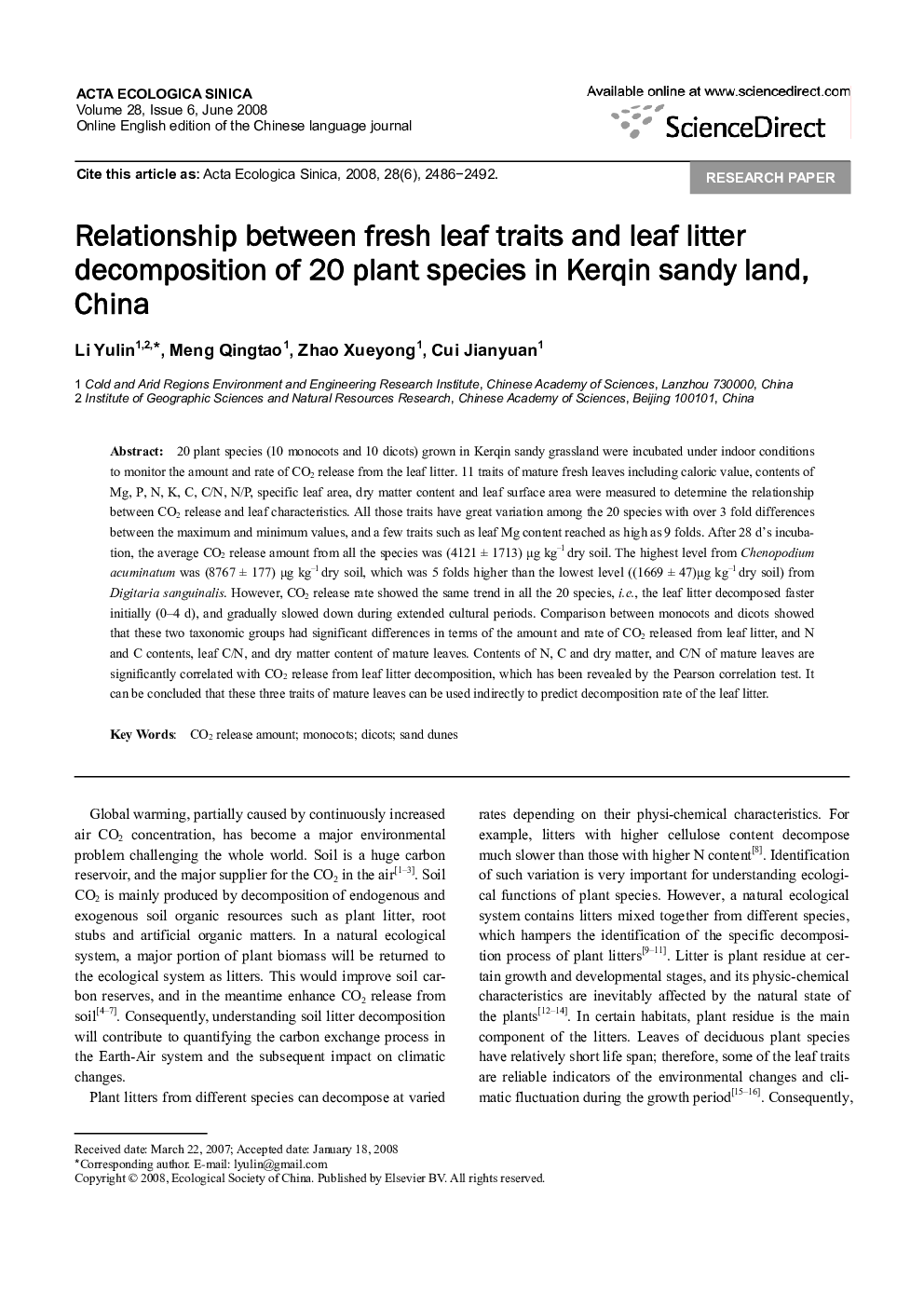| Article ID | Journal | Published Year | Pages | File Type |
|---|---|---|---|---|
| 4380403 | Acta Ecologica Sinica | 2008 | 7 Pages |
20 plant species (10 monocots and 10 dicots) grown in Kerqin sandy grassland were incubated under indoor conditions to monitor the amount and rate of CO2 release from the leaf litter. 11 traits of mature fresh leaves including caloric value, contents of Mg, P, N, K, C, C/N, N/P, specific leaf area, dry matter content and leaf surface area were measured to determine the relationship between CO2 release and leaf characteristics. All those traits have great variation among the 20 species with over 3 fold differences between the maximum and minimum values, and a few traits such as leaf Mg content reached as high as 9 folds. After 28 d's incubation, the average CO2 release amount from all the species was (4121 ± 1713) μg kg−1 dry soil. The highest level from Chenopodium acuminatum was (8767 ± 177) μg kg−1 dry soil, which was 5 folds higher than the lowest level ((1669 ± 47)μg kg−1 dry soil) from Digitaria sanguinalis. However, CO2 release rate showed the same trend in all the 20 species, i.e., the leaf litter decomposed faster initially (0–4 d), and gradually slowed down during extended cultural periods. Comparison between monocots and dicots showed that these two taxonomic groups had significant differences in terms of the amount and rate of CO2 released from leaf litter, and N and C contents, leaf C/N, and dry matter content of mature leaves. Contents of N, C and dry matter, and C/N of mature leaves are significantly correlated with CO2 release from leaf litter decomposition, which has been revealed by the Pearson correlation test. It can be concluded that these three traits of mature leaves can be used indirectly to predict decomposition rate of the leaf litter.
